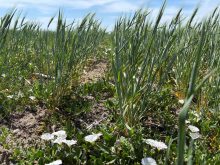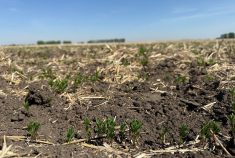Los Angeles | Reuters — A so-called “atmospheric river of rain” began falling on northern California on Friday, bringing worries about flash floods, high winds and mudslides but offering little relief to a state left parched by several years of drought.
The storm, also known as a “Pineapple Express” because it results from a ribbon of moist air moving across the southern Pacific Ocean was forecast to dump as much as 25 cm of rain in coastal mountains.
National Weather Service meteorologist Austin Cross said more than 7.5 cm of rain had been already recorded in the hills of western Sonoma County by early afternoon on Friday.
Read Also

U.S. grains: Wheat leads grains higher with Russian strikes in focus
Chicago | Reuters – Chicago wheat rebounded on Monday as reports of more Russian strikes on Ukrainian port infrastructure rekindled…
Flash flood advisories were issued for Sonoma, Napa and Marin counties and authorities were also concerned about the potential for mudslides in hillsides left scarred by wildfires. High winds knocked down trees and caused scattered power outages.
According to Pacific Gas and Electric, some 24,000 homes and businesses had been impacted across the Bay Area since the storm hit, although power had been restored to most customers by mid-afternoon.
Cross said heavy rains were expected to fall throughout the day on Friday and then again on Sunday after a brief lull on Saturday.
Forecasters say that while the soaking that the storm will deliver to northern California will provide a small measure of relief to the drought-stricken state, it was not expected to make a significant impact, in part because the warm weather system would not add to mountain snow packs.
The multi-year record drought has prompted California officials to sharply reduce water supplies to farmers and impose strict conservation measures statewide.
Brian Fuchs, a climatologist with the U.S. Drought Monitor, said experts were optimistic when California was hit with several strong storm systems in December but those hopes largely evaporated when January saw very little precipitation.
January is typically the state’s wettest month, he said, with little rain falling between mid-April and December.
Fuchs said the intensity of the drought was lessened in some areas, including Marin County, after December’s rains and that a small section of the state, on the eastern edge of San Bernardino County, was no longer considered to be in a drought.
“It’s one little corner of the state, a desert region that had more precipitation than they usually do and that was enough,” he said, adding that it would not make a significant impact on the larger crisis.
— Dan Whitcomb is a Reuters correspondent based in Los Angeles.















